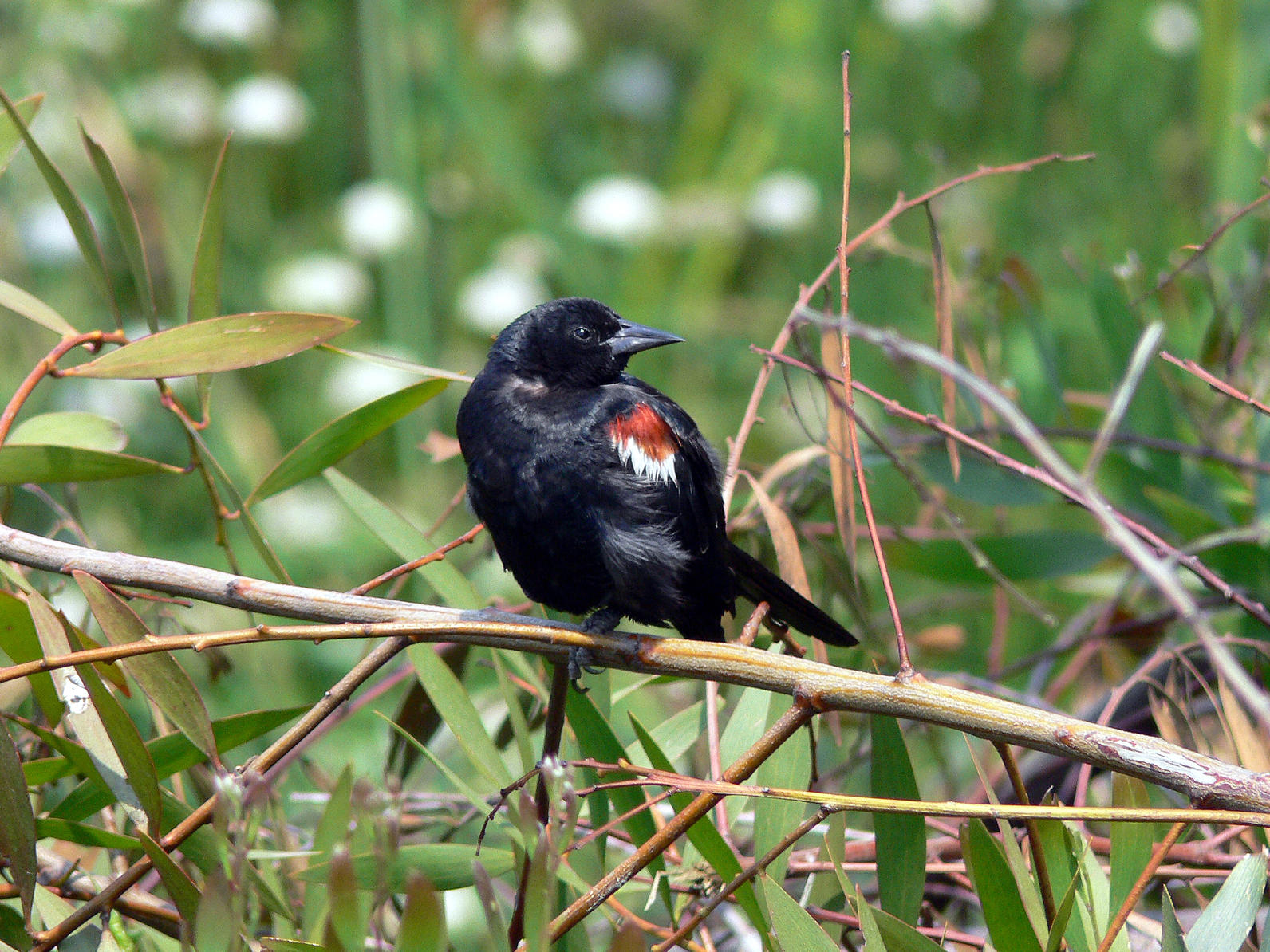Latest News and Updates from Audubon in California
California Condor. Photo: Scott Frier/USFWS
Our own Samantha Arthur caught video of this large colony of about 3,000 Tricolored Blackbirds in Sacramento County over the past weekend. These birds are in a patch of blackberry off I-50, and the birds fly over the highway to forage in the foothill grasslands. Right now the birds are nest building and breeding. The males are singing and the colony is very active. Soon they will quiet down and incubate eggs.
Our staff is out in the field with a variety of partners looking to protect Tricolored Blackbird colonies.

We're getting reports from our field team that at least five Tricolored Blackbird nesting colonies have been found on dairy farms so far this spring. We're working closely with the State Department of Fish and Wildife, the Natural Resources Conservation Service, and the Western Dairymen Assocation to contact the farmers and protect the nests. As we've discussed in the past, these colonies are in extreme danger when they nest on a dairy farm, because the farmers often need to harvest the field before the birds have fledged. Last year, we were able to protect every Tricolored Blackbird colony found on dairy farms, and that's our goal again this year.

The beginning of nesting season is a great opportunity to get a read on the population number of Tricolored Blackbirds. This weekend, about a hundred surveyors are taking the field in locations throughout the state to count the birds. The survey is being led by our friends at UC Davis. Lots of Audubon volunteers and staff are taking part. While the bird has been sharply declining in recent years -- 44 percent since 2011 -- we're optimistic that we'll find more birds this year. Rains this year have made things much more hospitable for the birds. That said, Tricolored Blackbirds nesting on dairy farms will still be in danger if we're not able to arrange to have the colonies protected. Results from this year's survey will be available later this summer.
A recent opinion piece in the Bakersfield Californian argued that while Central Valley refuges are getting 100 percent of their water allocations, farmers were getting substantially less. That's just not true, and Harry Love of the Kern Audubon Society recently took to the same paper to explain why:
"Most of the Central Valley Project’s farm and urban water contractors will receive 100 percent of their contract amount with the federal government. The most junior South of Delta federal water contractors are projected to receive 65 percent of their contract amount and that allocation will likely increase in coming months.
"But there is another user that will not receive full water supplies – Central Valley wetlands. More than 90 percent of the Central Valley’s historic wetlands are gone. Our waterfowl populations have fallen from 40 million historically to 5 million today. Even at this diminished level, the Valley is one of the most important places in America for ducks, geese and other migratory waterbirds ...
"This year, the federal government announced an allocation of 100 percent of the minimum water supply for wetlands but this is far short of the full water contracts for our wetlands. The Bureau of Reclamation has an obligation to purchase or develop additional water supplies to meet the full needs of the Valley’s few remaining wetlands.
It is not clear yet how close the Bureau will get this fall to delivering full water supplies when wetlands need water most. In recent years, federal agencies have provided an average of only 32 percent of this critical water for south of Delta refuges. Unfortunately, this shortage of water for Valley wetlands is often overlooked.
To create critical habitat, hunting opportunities, and more, Central Valley wetlands are highly managed and irrigated, much like farmland. So when wetland water managers get only 32 percent of a key supply, it matters. This shortage reduces spring and summer habitat for ducks that breed here. It reduces the amount of food from wetlands plants that feed migratory birds in the fall. It increases the risk of overcrowding and disease.
Like Valley farmers, duck hunters and wetland managers need water supplies to manage their lands to support wildlife and recreational opportunities. However, in the last 25 years, the Bureau has not once delivered all of the water owed to wetlands. The truth is that the Valley’s two large water projects, the Central Valley Project and the State Water Project, have never delivered 100 percent of their combined water obligations in a single year."
Our newsletter is fun way to get our latest stories and important conservation updates from across the state.
Help secure the future for birds at risk from climate change, habitat loss and other threats. Your support will power our science, education, advocacy and on-the-ground conservation efforts.
Join the thousands of Californians that support the proposed Chuckwalla National Monument.